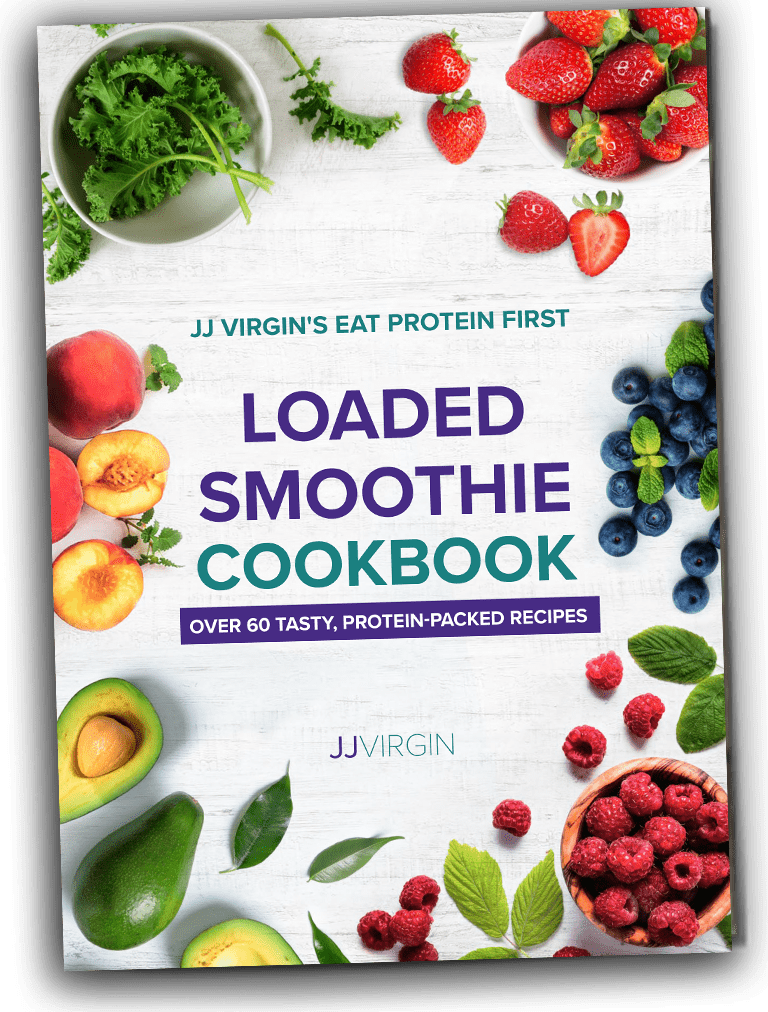Red meat has undeservedly earned a bad reputation. Much of the confusion comes from a scientist named Ancel Keys, who, in the 1950s, developed what we call the diet-heart hypothesis. Keys concluded that cholesterol was a cause of heart disease, saturated fat caused a rise in cholesterol, and saturated fat therefore caused heart disease.1 Case closed, right?
Hardly.
Keys’s seven-country study has been widely criticized for (among other things) cherry-picking his research. Regardless of how deeply flawed this study was, fear of fat and red meat still exists today.
“If red meat increased the risk of heart disease, then we should have better epidemiological evidence—but we don’t,” says Mark Hyman, MD, in Eat Fat, Get Thin. “If red meat were really the problem, we should have seen it in the research. Yet in a study of over 1.2 million people, no link was found between red meat and heart disease, stroke, or diabetes.”
Research confirms this: one review of observational and randomized control trials found no effect of saturated fat on cardiovascular disease or diabetes.2
So why does red meat still have a stigma? Part of the confusion stems from quality. As I’ll explain, the saturated fat in a fast-food cheeseburger differs dramatically from what you get in a grass-fed sirloin.
When I refer to red meat, I’m primarily talking about beef. But red meat also includes pork, lamb, veal, and game meats like venison. I eat red meat because it tastes good, but its health benefits also make it one of the healthiest foods on the planet.
Here are four reasons why you should regularly eat red meat, too.
1. Red Meat Is a Great Protein Source
Red meat is an excellent source of protein, important for a zillion reasons, including building and maintaining muscle mass. Studies show that for older adults, moderate beef consumption can increase protein intake to preserve muscle mass and improve nutrition status.3
Depending on the type, four ounces of red meat provides about 29-36 grams of protein.4 Unlike many plant foods, the protein in red meat also offers optimal amounts of all nine essential amino acids. Your body can’t make these amino acids (hence the word essential), which means you’ve got to get them from food.
Researchers evaluate protein quality (along with the body’s ability to digest that protein) with what’s called the protein digestibility-corrected amino acid score (PDCAAS). Beef earns a 0.92 rating out of 1.0, confirming that red meat is a superior, high-quality source of protein.5
2. Red Meat (Especially Grass-Fed Beef) Provides Healthy Fats
Red meat is high in fat, about half of which is saturated. However, about 30% is stearic acid, a fatty acid that may protect you against heart disease.6
Overall, grass-fed contains less total fat than grain-fed beef. By grass-fed beef, I’m referring to beef from cattle that have been raised primarily on grass or forage and graze on open pastures. Grain-fed beef, on the other hand, refers to cows fed grains, corn and/or soybeans.
Grass-fed beef is the clear winner. It has a more favorable fatty-acid profile, including higher amounts of a fatty acid called conjugated linoleic fatty acid (CLA).7 Some research shows that CLA can reduce belly fat and may protect against heart disease and cancer.8
Grass-fed beef also contains more anti-inflammatory omega-3 fatty acids, which can balance its inflammatory omega-6 fatty acids. In fact, cattle fed primarily grass enhance their omega-3 content by 60%.9
That makes sense when you consider cows naturally graze on grass, not grains. An overall superior fatty-acid profile means that grass-fed beef may protect against cancer, cardiovascular disease, and other diseases.10
3. Red Meat Has a Stellar Vitamin and Mineral Profile
Red meat is a nutrient powerhouse. It is one of the few food sources of vitamin B12. Among its benefits, this vitamin supports bone health and helps prevent osteoporosis, supports eye health, improves your mood, and promotes steady energy, brain function, and heart health.11
Red meat is also a rich source of zinc. This trace mineral contributes to over 300 enzymes, including the enzyme that protects your cells against free-radical damage.12 Zinc also supports a strong immune system, wound healing, carbohydrate breakdown, and better insulin sensitivity.13
Red meat also contains heme iron, a form that your body absorbs better than non-heme iron (found in plant foods). Iron supports red blood-cell production and helps carry oxygen throughout your body.
Grass-fed red meat contains higher amounts of nutrients, including vitamins A and E, compared with grain-fed meats as well. Plus, grass-fed beef has higher amounts of antioxidants, including your body’s master antioxidant, glutathione.14
4. Red Meat Provides Important Conditionally Essential Nutrients
Beyond vitamins and minerals, red meat is rich in conditionally essential nutrients that play unique roles for energy production, physical performance, and so much more. These nutrients offer more targeted benefits beyond what vitamins and minerals provide.
A three-ounce serving of beef contains about 80 mg of L-carnitine, a compound that shuttles fat into your mitochondria to burn for energy.15 Research shows that L-carnitine supports fat loss, muscle health, and increased physical performance.16
Red meat also provides creatine, which plays an important role in the production of adenosine triphosphate (ATP), your body’s primary energy source.
Your muscles store about 95% of your body’s creatine, making this compound valuable for high-intensity exercise, recovery, injury prevention, and even brain health.17 On average, beef provides around two grams of creatine per pound.18
Then there’s coenzyme Q10 (CoQ10), a fat-soluble compound found in the little energy plants within your cells called mitochondria. Your heart, lungs, and liver store and use CoQ10. CoQ10 also functions as an antioxidant to fight damaging free radicals. Four ounces of beef provides about 3.1 milligrams of CoQ10.19
The Healthiest Way to Enjoy Red Meat
I enjoy a grass-fed, grass-finished steak regularly, and you should too.
In Eat Fat, Get Thin, Dr. Hyman notes that unhealthy gut bacteria—not saturated fat—is the culprit for heart disease. Adding leafy and cruciferous greens along with slow low carbs to your red-meat meal provides the nutrients and fiber you need to support your digestive system.
Red meat can get expensive. If cost is an issue, consider shopping sales, order online, or buy in bulk and freeze.
When you buy red meat, I can’t emphasize quality enough. You are what you eat, ate. If cows were pumped full of hormones, antibiotics, and other chemicals—guess where that stuff is going to end up? (In your meat, and in your body.)
Also consider animal welfare and sustainable farming practices. Always buy pasture-raised, grass-fed, and grass-finished meat, ideally from a source that you can trust for providing high ethical and environmental standards. Both ButcherBox and Thrive Market have great options.
My Paleo-Inspired All-In-One Shakes are made from HydroBEEF™, a highly concentrated, pure beef protein sourced from animals raised in Sweden without hormones or antibiotics. Every serving provides 20 grams of high-quality protein along with vitamins, minerals, an organic fruits and veggies blend, and more.
References:
- Bowden, Jonny; Sears, Barry; Cole, Will. Living Low Carb: Revised & Updated Edition (p. 74). Union Square & Co.. Kindle Edition.
- Geiker NRW, Bertram HC, Mejborn H, Dragsted LO, Kristensen L, Carrascal JR, Bügel S, Astrup A. Meat and Human Health-Current Knowledge and Research Gaps. Foods. 2021 Jul 5;10(7):1556. doi: 10.3390/foods10071556. PMID: 34359429; PMCID: PMC8305097.
- Asp ML, Richardson JR, Collene AL, Droll KR, Belury MA. Dietary protein and beef consumption predict for markers of muscle mass and nutrition status in older adults. J Nutr Health Aging. 2012;16(9):784-90. doi: 10.1007/s12603-012-0064-6. PMID: 23131821.
- Hoffman JR, Falvo MJ. Protein – Which is Best? J Sports Sci Med. 2004 Sep 1;3(3):118-30. PMID: 24482589; PMCID: PMC3905294.
- University of Florida: Beef: Fat Composition & Human Health
- Nogoy KMC, Sun B, Shin S, Lee Y, Zi Li X, Choi SH, Park S. Fatty Acid Composition of Grain- and Grass-Fed Beef and Their Nutritional Value and Health Implication. Food Sci Anim Resour. 2022 Jan;42(1):18-33. doi: 10.5851/kosfa.2021.e73. Epub 2022 Jan 1. PMID: 35028571; PMCID: PMC8728510.
- Lehnen TE, da Silva MR, Camacho A, Marcadenti A, Lehnen AM. A review on effects of conjugated linoleic fatty acid (CLA) upon body composition and energetic metabolism. J Int Soc Sports Nutr. 2015 Sep 17;12:36. doi: 10.1186/s12970-015-0097-4. PMID: 26388708; PMCID: PMC4574006.
- Bowden, Jonny. The 150 Healthiest Foods on Earth: The Surprising, Unbiased Truth about What You Should Eat and Why (p. 196). Creative Publishing International. Kindle Edition.
- Nogoy KMC, Sun B, Shin S, Lee Y, Zi Li X, Choi SH, Park S. Fatty Acid Composition of Grain- and Grass-Fed Beef and Their Nutritional Value and Health Implication. Food Sci Anim Resour. 2022 Jan;42(1):18-33. doi: 10.5851/kosfa.2021.e73. Epub 2022 Jan 1. PMID: 35028571; PMCID: PMC8728510.
- Cheng Y, Chen H. Aberrance of Zinc Metalloenzymes-Induced Human Diseases and Its Potential Mechanisms. Nutrients. 2021 Dec 13;13(12):4456. doi: 10.3390/nu13124456. PMID: 34960004; PMCID: PMC8707169.
- Rabinovich D, Smadi Y. Zinc. 2022 May 8. In: StatPearls [Internet]. Treasure Island (FL): StatPearls Publishing; 2022 Jan–. PMID: 31613478.
- Daley CA, Abbott A, Doyle PS, Nader GA, Larson S. A review of fatty acid profiles and antioxidant content in grass-fed and grain-fed beef. Nutr J. 2010 Mar 10;9:10. doi: 10.1186/1475-2891-9-10. PMID: 20219103; PMCID: PMC2846864.
- Beef® Magazine: Is Carnitine Bad For You? Beef Experts Say No
- Vecchio M, Chiaramonte R, Testa G, Pavone V. Clinical Effects of L-Carnitine Supplementation on Physical Performance in Healthy Subjects, the Key to Success in Rehabilitation: A Systematic Review and Meta-Analysis from the Rehabilitation Point of View. J Funct Morphol Kinesiol. 2021 Nov 4;6(4):93. doi: 10.3390/jfmk6040093. PMID: 34842765; PMCID: PMC8628984.
- Hall M, Manetta E, Tupper K. Creatine Supplementation: An Update. Curr Sports Med Rep. 2021 Jul 1;20(7):338-344. doi: 10.1249/JSR.0000000000000863. PMID: 34234088.
- University of Delaware: Creatine
- Nourish by WebMD: Foods High in CoQ10
*These statements have not been evaluated by the Food & Drug Administration. Products mentioned are not intended to diagnose, treat, cure, or prevent any disease. The views in this blog by JJ Virgin should never be used as a substitute for professional medical advice. Please work with a healthcare practitioner concerning any medical problem or concern.





